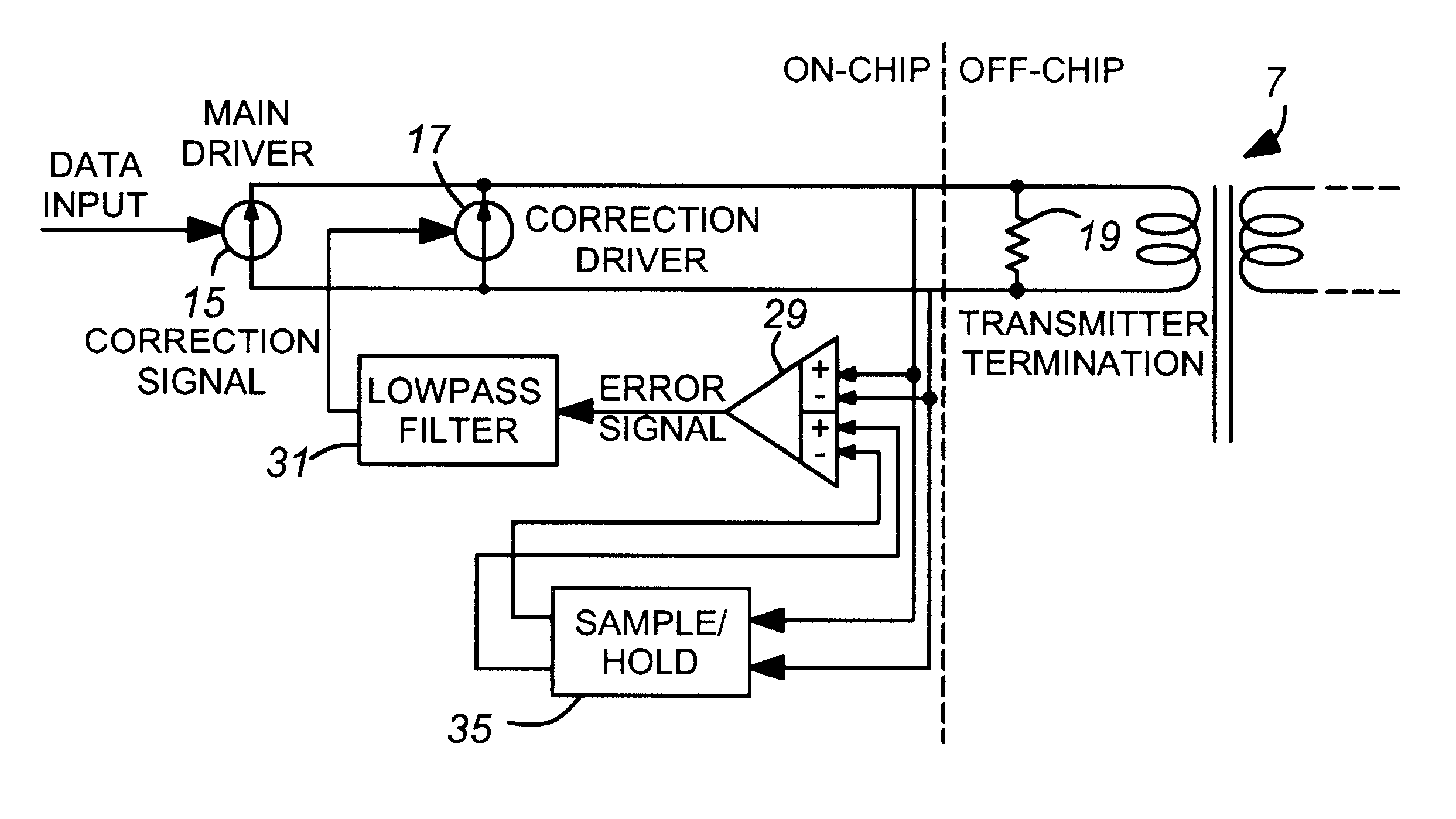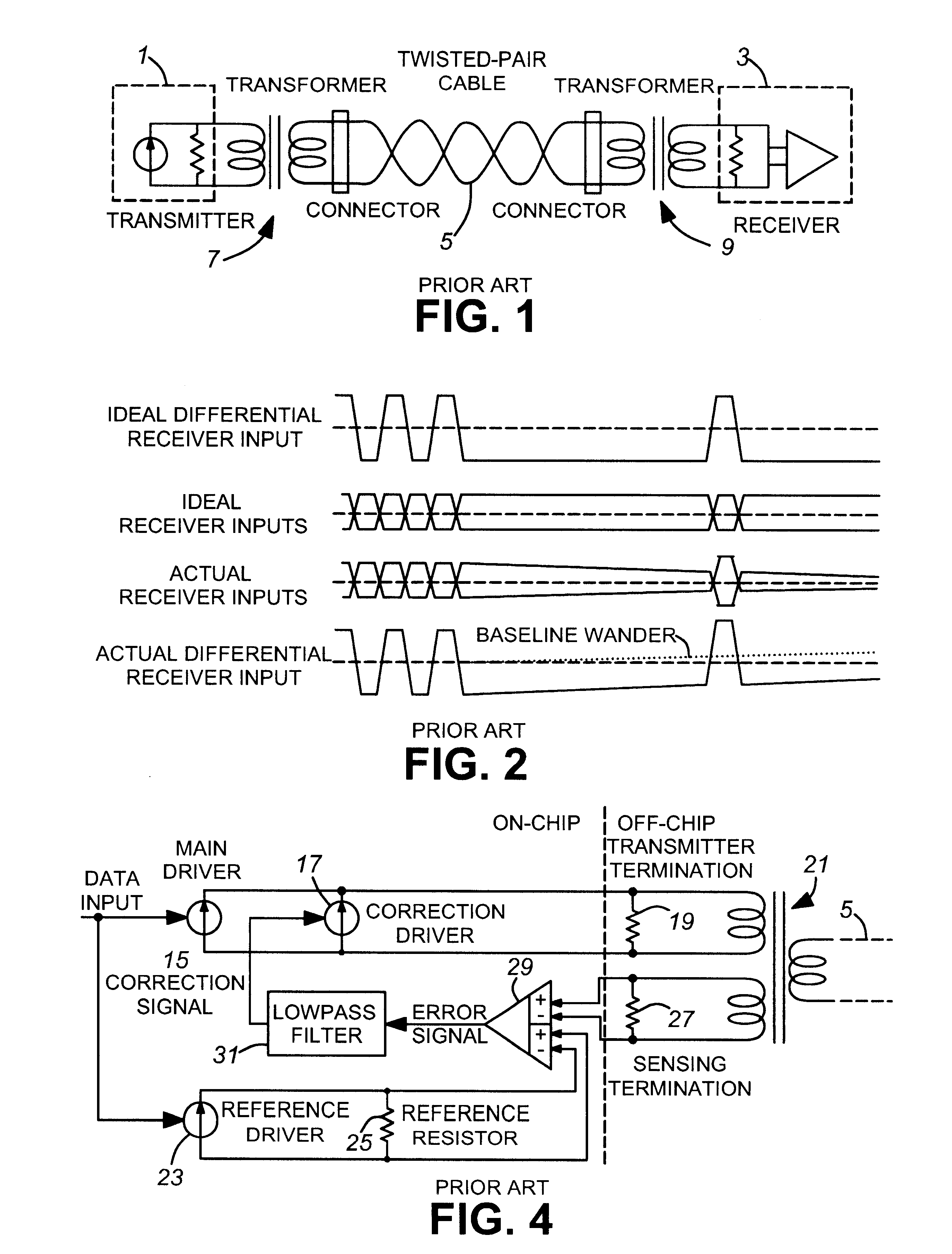Transmit baseline wander correction technique
a correction technique and baseline technology, applied in the direction of transmission line coupling arrangement, automatic control, transmitter/receiver shaping network, etc., can solve the problem of baseline wander, data errors, jitter or data loss
- Summary
- Abstract
- Description
- Claims
- Application Information
AI Technical Summary
Problems solved by technology
Method used
Image
Examples
Embodiment Construction
Turning to FIG. 5, a main current driver 15 receives a digital data input signal at a control input, and drives a primary winding of a transformer 7, which winding is in parallel with a transmitter termination resistor 19. A correction (compensation) current driver 17 has a correction signal applied to its control input, the correction signal being derived from the output of error amplifier 29 via lowpass filter 31.
So far, except for the type of transformer used, the circuit is similar to that of FIG. 4.
However, in this embodiment of the invention, instead of one of the signals applied to a pair of inputs of the error amplifier 29, e.g. a comparator, being obtained from a ternary winding of the transformer, it is obtained from directly across the primary winding of the transformer. The same signal is applied to the input of a sample and hold circuit 35. The ongoing signal is thus sampled from time to time (preferably in sync with the input signal) and is held by circuit 35.
The outpu...
PUM
 Login to View More
Login to View More Abstract
Description
Claims
Application Information
 Login to View More
Login to View More - R&D
- Intellectual Property
- Life Sciences
- Materials
- Tech Scout
- Unparalleled Data Quality
- Higher Quality Content
- 60% Fewer Hallucinations
Browse by: Latest US Patents, China's latest patents, Technical Efficacy Thesaurus, Application Domain, Technology Topic, Popular Technical Reports.
© 2025 PatSnap. All rights reserved.Legal|Privacy policy|Modern Slavery Act Transparency Statement|Sitemap|About US| Contact US: help@patsnap.com



